- Sichuan -
Called the Land of Abundance, is in abundance of diverse natural resources and cultural heritages, and has been one of the hot destinations for many travelers to China. Central Sichuan is also home to the giant panda. To the north the visage changes into a fairyland of alpine valleys and blue-green lakes. Sichuan’s Tibetan face appears as you venture west. This is Kham, one of the former Tibetan prefectures: a vast landscape of plateau grasslands and glacial mountains where Tibetan culture still thrives and you’re certain to have your most challenging, yet most magical, experiences.
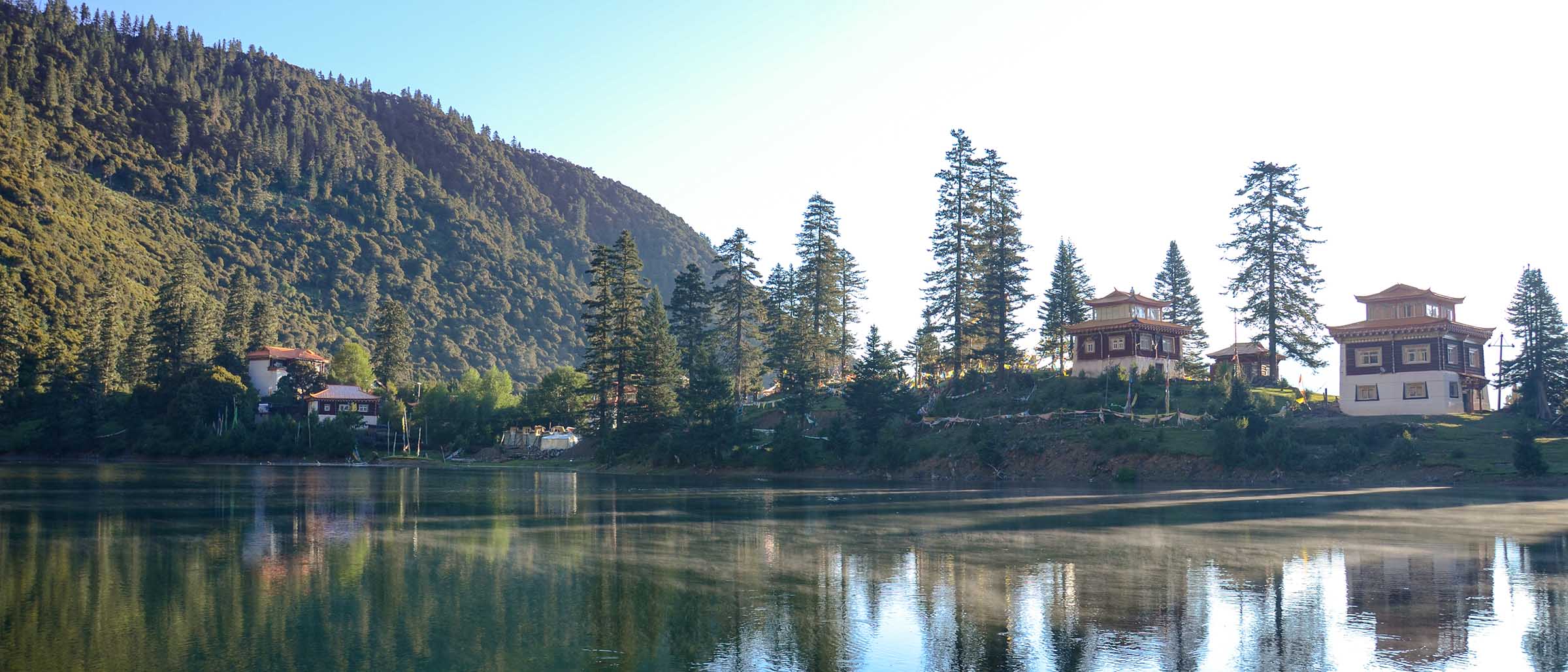
Basic Information
Chinese Name: 四川(Sichuan)
Location: the upper reach of the Yangtze River and the hinterland of Southwest China.
Provincial Capital: Chengdu
Acreage: about 485,000 square kilometers.
Famous Cities: Chengdu, Leshan, Jiuzhaigou, Kangding
Population: 83,750,000 (2019) in total; 55 ethnic groups with a population of 4.91 million(2010) in Sichuan.
Major Ethnic Group: The Han, Yi, Zang, Qiang, Miao, Tujia, Lisu, Naxi, Buyi, Bai, Zhuang, and Dai are indigenous ethnic groups in the Province.
Sichuan History
The Sichuan Basin and adjacent areas of the Yangtze watershed were a cradle of indigenous civilizations dating back to at least the 15th century BC, coinciding with the Shang in northern China. The region had its own distinct religious beliefs and worldview. The earliest culture found in the region through archaeological investigation is the Baodun culture (c.2700–1750 BC) excavated in the Chengdu Plain.
Concise History Thereafter
Han Dynasty (206BC-220AD) – The area became the center of world's lacquer craftwork and the birthplace of tea culture with advanced technology of Shu Brocade.
Five Dynasties period (907-960) – the emperor of Later Shu planted hibiscus all round the city wall, hence Chengdu got the nickname, Furong Cheng (Hibiscus City), or Rong Cheng for short.
Tang Dynasty (618-907) – Engraving typography was first invented and used here.
Song Dynasty (960-1279) – Chengdu led the list, being a foremost prosperous city on a par with Yangzhou which had the busiest water transport and port in China at that time. The earliest paper currency in the world 'Jiao Zi' was issued there during the Northern Song Dynasty (960-1127).
Ming (1368-1644) and Qing (1644-1911) dynasties – The previously flourishing city vanished during the war during the late Ming Dynasty but its economy made a gradual recovery during the Qing Dynasty. Through two expansions during Kangxi and Qianlong Periods, a grand new city evolved once more. Following the Opium War, the city went into a decline and its role overtaken by Chongqing.
In modern times, the city was re-established as the capital of Sichuan Province in 1928, and has remained so following the foundation of the PRC.
Sichuan Culture
As early as in the trace of human activity, the Wushan people and Ziyang people once lived in Sichuan. A saying goes like this, “The people from western and eastern Sichuan shared the same ancestors.” As Chinese civilization developed, the culture of Sichuan glowed with dazzling light in successive dynasties. Up until now, Sichuan remains a renewed and important part of Chinese culture.
With long history and strong cultural background, Sichuan boasts profound culture with various distinctive features. Characterized by incredible Sichuan Opera, fabulous Sichuan Cuisine, tea culture, and the local leisure life, Sichuan culture provides great fun and interesting activities to enjoy.
In the markets and streets as well as the village roads throughout Sichuan, you can see teahouses with unique Sichuan styles. Sitting in bamboo chairs, people gather around wooden tables, hold special tea wares exclusively owned by the teahouse and take a sip of fragrant tea.
Sichuan Grography
Sichuan province is located in western central China. The easternportion of the province has countless winding and spectacular rivers, most of them tributaries flowing southward to the Yangtze (Chang Jiang) — including the Min River. The western border with Tibet (Xizang Zizhiqu) follows the basin between the north-south running Ningjing and Shaluli mountain ranges in the west and east respectively. Sichuan also shares a border with Qinghai in the northwest and Shaanxi in the northeast. East of the Shaluli range, the Daxue range runs roughly parallel. East of the Dadu River from Daxue Shan, the Qionglai Mountains run northeast with the eastern edge falling sharply and ending the Tibetan Plateau. South of Qionglai Shan the Tibetan Plateau ends similarly with the southeast running Daliang Mountains. Sichuan also borders Hubei, Hunan, and Gansu provinces
Sichuan Climate
Sichuan is located in the transitional zone between Qinghai-Tibet Plateau and the eastern plains and therefore has complex and diverse climates with rather obvious regional differences and vertical changes. There are distinct disparities between east and west Sichuan as well.
The overall characteristics of Sichuan’s climate can be summarized as follows: monsoon climate is obvious and rain and heat happens in the same seasons; regional climate differences are prominent in that the east is characterized by warm winters, early springs, hot summers, rainy autumns, much cloud and fog, little sunshine and a long growing season while the west is characterized by coldness, long winters, almost no summer, sufficient sunshine, concentrated rainfall and distinct dry and rainy seasons; vertical climate changes are significant and climate types are varied; meteorological disasters happen in various forms with a high frequency and large scope, which are mainly droughts, rainstorms, floods and cold weather.e:
The best time to travel in Sichuan is in spring and autumn, especially in February and March, July to October. Spring is dry in Sichuan lowlands and south area, with little but concentrated precipitation on the plateau. Summer is hot in Sichuan lowlands and south area, but on the plateau, there seems no summer. In July, the temperature has reached 25ºC to 29 ºC in the lowlands, 11 ºC to 17 ºC on the plateau, and 22 ºC to 26 ºC in the south. Autumn is rainy season in Sichuan lowlands and south area, but is with strong sunshine on the plateau. Winter is warm in Sichuan lowlands and south area, but a little cold on the plateau. In January, the temperature may be 3 ºC to 8 ºC in the lowlands, -9 ºC to 3 ºC on the plateau, and 8 ºC to 13 ºC in the south.
Tourism Resources
Called the Land of Abundance, is in abundance of diverse natural resources, and has been one of hot destinations for many travelers to China.
It's fitting that an ancient form of opera and magic called bianlian (face-changing) originated here, for Sichuan is a land of many guises. Capital Chengdu shows a modern face, but just beyond its bustling ring roads you'll find a more traditional landscape of mist-shrouded, sacred mountains, and a countryside scattered with ancient villages and cliffs of carved Buddhas.
Central Sichuan is also home to the giant panda, the most famous face in China. In the south, expect a veil of history and a muted beauty that sees far fewer travellers than the rest of the region.
To the north the visage changes again into a fairyland of alpine valleys and blue-green lakes. Sìchuan’s Tibetan face appears as you venture west. This is Kham, one of the former Tibetan prefectures: a vast landscape of plateau grasslands and glacial mountains where Tibetan culture still thrives and you’re certain to have your most challenging, yet most magical, experiences.Most of western Sichuan, rich in tourism resources, still remains untapped and awaits the exploration by visitors.Once stepping on the Land of Abundance, you can enjoy the fun of travel as much as you can.
You can appreciate a wide variety of beautiful landscape including sacred & mysterious mountains, fairyland of alpine valley, blue-green lakes, vast landscape of plateau grassland, glacial mountains where Tibetan culture still thrives, beautiful waterfalls, limestone caves, evergreen bamboo forests…
Hot Destinations: Chengdu, Leshan, Emeishan, Dujiangyan, Daocheng, Kangding, Ganzar...
World Heritage Sites: Jiuzhaigou Valley Scenic Area, Huanglong Scenic Area, Leshan Giant Buddha, Mount Emei, Dujiangyan Irrigation System, Mount Qingcheng, Sichuan Giant Panda Sanctuaries (like Wolong Panda Reserve)
Other Popular Attractions: Mount Siguniang, Yading Scenic Area, Danba Tibetan Village, Xinduqiao, Hailuogou Glacier, Dagu Glacier, Ruoergai Grassland,
Featured Activities: Panda volunteering, Sichuan food cooking, hiking & walking, kung fu learning, photography, cultural travel, Buddhism & Taoism travels…
Sichuan Cuisine
Represented by the local dishes of Chengdu and Chongqing, Sichuan cuisine is a style of Chinese cuisine originating in the Sichuan Province of southwestern China. As one of China's Four Major Styles of Cooking, Sichuan cuisine features spicy, tongue-numbing, savory, delicious, oily and heavily seasoned flavor. Sichuan cuisine enjoys a time-honored history and is well-reputed home and abroad. In 2010, Chengdu was declared a “City of Gastronomy” by UNESCO Creative Cities Network.
Known as the "heavenly country", Sichuan highlights its abundance of food and natural resources. Therefore, Sichuan cuisine features the well-arranged and enriched seasonings, particularly the use of garlic, ginger, chili peppers, as well as the unique Sichuan prickly ash. All these seasonings create the characteristic pungency and spiciness of Sichuan cuisine.
Statistics show that the number of Sichuan dishes has surpassed 5,000. Some representative dishes include Kung Pao Chicken, Mapo Tofu, Fish-flavored Pork Shred, Twice Cooked Pork and Sichuan Hotpot.
Sichuan Festivals
As the land of abundance in China, Sichuan also has many ethnic minorities that boast brilliant and colorful festivals that worthy your time during your travel in Sichuan.
Litang horse racing festival
August 1st
The horse racing festival is held on August 1st annually on Litang County of Ganzi Tibetan Autonomous Prefecture of Sichuan Province. On that day, the herdsmen wearing splendid attire gather on Litang from far and near, celebrating the festival joyfully together. On the racing field, spectators can admire the galloping horses, breathtaking horse skill performances, unique plateau landscape with rich ethnic characteristics and an ocean of happiness. During the festival, there are huge crowds of people and a number of tents are set up on the grassland. Besides, a grand Buddhist ceremony is also held during the festival every year.
Xichang Torch Festival
Jun. 25th(lunar calendar)
Xichang Torch Festival of the Yi nationality is held annually on the 25th day of the six lunar month of the traditional Chinese calendar, lasting for three days. It is the traditional festival of the Yi nationality for driving away evil spirits and praying for a prosperous year. On that day, the local people and tourists from many other places gather there, dancing and singing joyfully in praise of the brilliant national culture and spirit. Xichang is the largest area in China, inhabited by the Yi nationality with rich ethnic customs. On the first day, the local people satisfy their stomach with mutton, beef and pure wine. On the second and third day, the climax of the festival reaches and people of all ages dressed in splendid attire gather together. The men participate in the traditional competitive sports, such as bullfight, horse racing and wrestling, while women are singing and dancing. At night, all the people holding torches sit together around the bonfire, dancing and rejoicing with wild excitement overnight. Thus, the torch festival is also celebrated as “the oriental Carnival”.
Siguniang Mountain Worship Festival
May 5th of lunar calendar
Siguniang Mountain Worship Festival is held on the May 5th of Lunar Calendar. On this day, local Tibetan (Jiarong Tibetan) from all different villages will dress their traditional clothes and gather together to celebrate it. The ancient religious rituals and joyful folk songs and dances will be performed to worship a harvest year.
Zigong Dinosaur Lantern Festival
Jan. 7th-Jan 15th of lunar calendar
The Dinosaur Lantern Festival in Zigong city is held around the Spring festival, which can be dated back to Tang (618-907) and Song (960-1279) Dynasties. During the festival, the China’s colorful traditional lantern made of bamboo, silk, paper and glass bottles will displayed, together with the colorful modern-style lanterns.
Jiuzhaigou Valley
Chinese name: 九寨沟(Jiu Zhai Gou)
Location: Jiuzhai Valley Guan Li Ju, Zhang Zha Zhen, Aba Zhou, Sichuan Province.
Ticket: Entrance ticket CNY169.00, sightseeing bus CNY90.00 during 01Apr-15Nov, Entrance ticket CNY80.00, sightseeing bus CNY80.00 during 16Nov-31Mar.
Estimated tour time: 1-2days
Recommended time to visit: May-Oct, especially Oct to see colorful leaves
Nearby attractions: Fairy Pool, Huanglong Scenic spot, Mouni Valley, Songpan Ancient Town.

Called Dzitsa Degu in Tibetan, Jiuzhai Valley or Jiuzhaigou National Park is located in the Aba Tibetan and Qiang Autonomous Prefecture of Sichuan Province, South Western China. It was declared a UNESCO World Heritage Site in 1992 and it belongs to the category 5 in the IUCN system of protected area categorization. Jiuzhai Valley literally means “Nine Village Valley” and is named after the nine Tibetan villages scattered throughout the park. There is evidence of people living in the national park up to 3,000 years and the local people still hold onto many of their traditional ways of life. The human population of the park is just over 1,000 which comprises of over 110 families.
The superb landscapes of Jiuzhai Valley are particularly interesting for their narrow conic karst land forms and spectacular waterfalls and lakes. There are over 220 bird species found in Jiuzhai Valley as well as a number of endangered plant and animal species, including the giant panda, Sichuan golden monkey and the Sichuan takin.
Jiuzhai Valley is part of the Min Shan mountain range on the edge of the Tibetan Himalayan Pletau and stretches over 720 sq km (72,000 hectares) with an extra buffer zone of 598 sq. km (60,000 hectares). The Min Mountains are one of South West China’s most important biodiversity typezones. The elevation of the national park ranges from almost 2,000m (6,500 feet) at the entrance to over 4,500m (14,760 feet) on the mountain peaks and the series of forest ecosystems are stratified by elevation.
More than just spectacular scenery, Jiuzhai Valley National Park is home to nine Tibetan villages, over 220 bird species as well as a number of endangered plant and animal species, including the giant panda, Sichuan golden monkey, the Sichuan takin and numerous orchids and rhododendrons.
Jiuzhai Valley is locally known as Jiuzhaigou (Chinese for “Nine Village Valley”). It is a national park located in the Min Shan mountain range, Northern Sichuan in South Western China. It is best known for its fabled blue and green lakes, spectacular waterfalls, narrow conic karst land forms and its unique wildlife. It was declared a UNESCO World Heritage Site in 1992; the park joined the Man and Biosphere Conservation Network in 1997 and has also received IUCN and ISO 14,001 accreditations.
It is China’s premier national park and is located at elevations ranging between 1,990m (6,529 feet) to 4,764m (15,630 feet) above sea level. Located on the edge of the Tibetan Himalayan Plateau in Northern Sichuan Province it is easily accessible by direct flights from Beijing, Shanghai, Xian, Chengdu, Chongqing and Hangzhou. Jiuzhai Valley provides spectacular scenery throughout the year making it one of China’s most treasured scenic sites.

Spirit of Jiuzhai Valley
Waters
Water is the spirit of Jiuzhai Valley. There are 114 individual Lakes in the park that span over 1,000m in altitude. It is said that these lakes were formed when a young boy presented the goddess Woluo Semo with a mirror made of wind. The goddess breaks the mirror and 114 pieces fall to the earth and the sparkling gem-like lakes of Jiuzhai Valley are formed. “The Fairyland of Earth” was created.
Waterfalls
There are 5 major waterfalls and numerous smaller waterfalls throughout the park. The Nuo Ri Lang Waterfall is the widest travertine topped waterfall in the world. All of Jiuzhai Valley’s scenic sites were formed as a result of the build up of snow during the Quaternary period which led to the development of Jiuzhai Valley’s glaciers. These glaciers subsequently cut and carved out the valley sides and floors creating Jiuzhai Valley as we know it today.
Forests
Forests cover more than half of the scenic area and much of the area not covered is above the tree line. As seasons alternate, the colours of the deciduous species change the face of Jiuzhai Valley. Jiuzhai’s tree and shrub species include firs, spruces, honeysuckles, azaleas, rhododendrons and bamboo.
Tibetan Culture
The local people still hold onto many of their traditional customs and culture. Local food and drink traditionally include barley, yak meat and mutton. Barley is the main staple which is used for yak butter tea, barley wine, barley bread and in other dishes. The main religion practiced by the Jiuzhai Valley local population is the pre-Buddhism Bon or Benbo-Sec religion. It was introduced to the Aba Prefecture in the 2nd century B.C. In the 7th century, Tibetan Buddhism was introduced to the region. Although through numerous conflicts Buddhism did become prevalent, the Benbo Sec religion has survived and developed, and is now recognised as one of the five sects of Tibetan Buddhism.
Frozen Waterfalls
The main attraction of the “Winter Wonderland” scenery is the magnificent, frozen waterfalls, in particular the Pearl Shoals and Nuo Ri Lang waterfalls. The magnitude of these giant blue icicles have led to many fairy tale like descriptions of winter in Jiuzhai Valley.
Attractions inside Jiuzhai Valley
Shuzheng Valley — See Most of the Lakes and Waterfalls
Shuzheng Waterfall is the most representative and important attraction in Shuzheng Valley. It's 62 meters wide and 15 meters high, and is the first waterfall after the river enters the valley. The lakes upstream among the shoals and stepping stones make the waterfall more magnificent.
Shuzheng Lakes
Shuzheng Lakes includes 19 lakes of different sizes, featuring different colors, and looking like terraced fields.
Nuorilang Waterfall
Praised as the most beautiful waterfall in Jiuzhai Valley, Nuorilang is also the widest (300 meters). It is at the center of Shuzheng Valley, and regarded as symbolic of Jiuzhai. It is more fabulous in the morning sunshine, especially if attended by a rainbow in the sky. In winter it's a frozen feast for the eyes, appearing as if it's hanging on the rocks.

Rize Valley — Explore the Habitat of the Giant Panda
Panda LakePanda Lake
Rize Valley is the elite part of the park. It offers an astonishing diversity of spectacular landscapes. Its main attractions include virgin forest, Strawberry Lake, Swan Lake, Panda Lake, Five Flowers Lake, Arrow Bamboo Lake, Pearl Beach Waterfall, and Mirror Lake.
Panda Lake
Giant pandas in Jiuzhai Valley used to love living near Panda Lake. They came here to drink, have fun, and look for food. Fish can be seen in this clear lake, even some rare species.
Five Flowers Lake
Multicolored and famous Five Flowers Lake is named after the flamboyant algae in the water. It looks magical and marvelous. It's actually said to have magical powers, so that the plants watered by the lake grow with particular vigor. And they do!
Arrow Bamboo Lake
Scores of tall bamboo canes, the favorite food of the giant pandas that used to stroll around Panda Lake, grow around Arrow Bamboo Lake. Reflections of bamboo and the surrounding mountains in the water create a wonderful sight!
The lake flows through the forest, and divides into many small branches, finally ending at Arrow Bamboo Waterfall. In 2001, the famous movie Hero, directed by Zhang Yimou, was shot amongst the charming scenery here.
Pearl Beach Waterfall
Pearl Beach is different from the other lakes in Jiuzhai Valley. It's a wide sandy beach with a bridge over it. Torrential waters from the lakes run under the bridge and crash into some rocks, causing waves to break on the beach. After another 200 meters rapids rush down over a steep cliff. Pearl Waterfall is massive and stirring, well worth photographing.
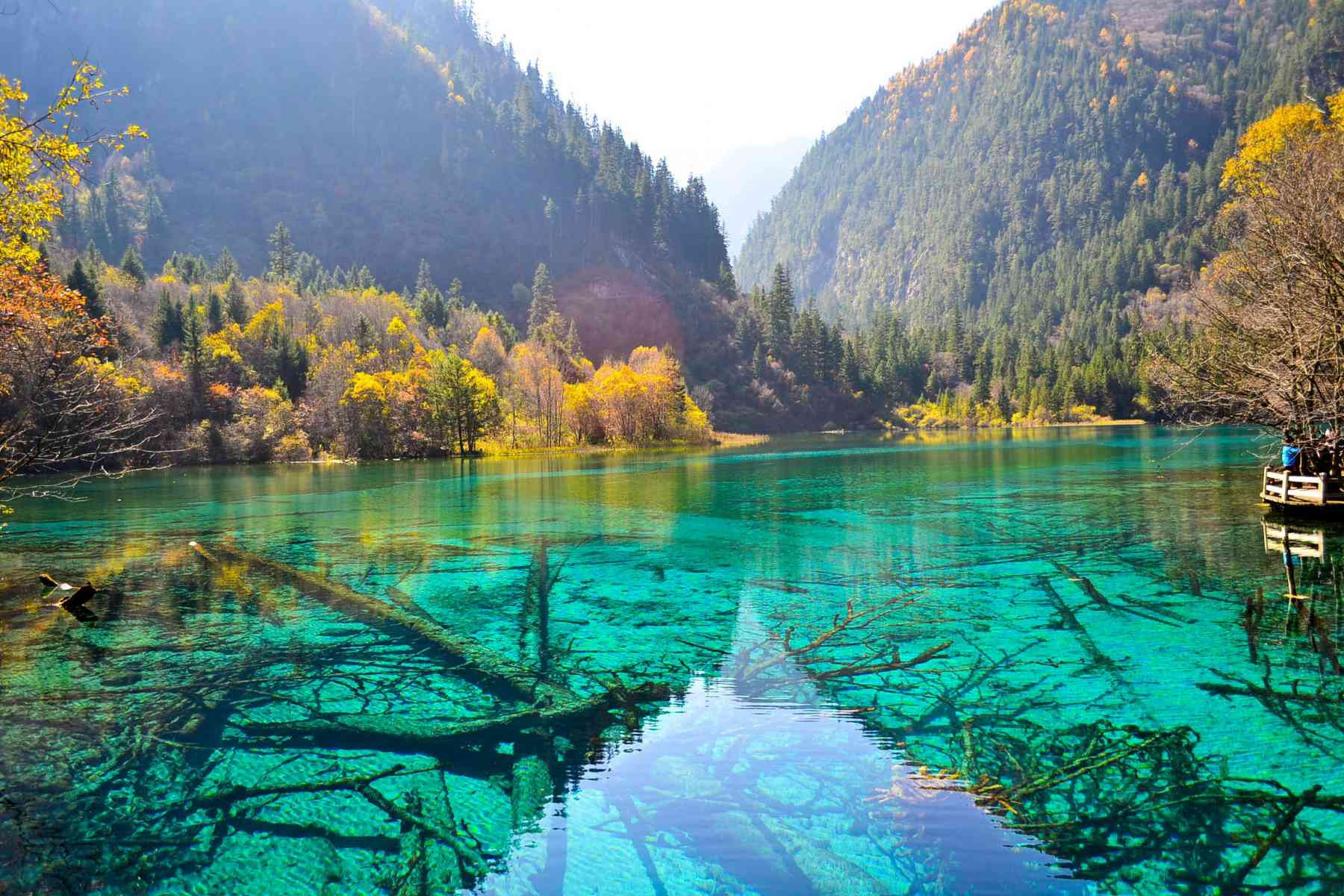
Zechawa Valley — See the Largest Lake
Zechawa Valley is about 18 km long, at the highest altitude in the park. The scenery here is just as attractive as elsewhere in Jiuzhai.
Long Lake
Long Lake is the largest lake in the park. It is dark blue, at the end of Zechawa Valley, facing a giant snow mountain and circled by cedars. The surrounding mountains are snow-capped for much of the year. Surveyed from afar, Long Lake looks like a large piece of extraordinary jade nestled among the mountains.
Seasonal Lakes
Five-Colored LakeFive-Colored Lake
Upper Seasonal Lake, Middle Seasonal Lake, and Lower Seasonal Lake are closely connected. Upper Seasonal Lake is surrounded by cliffs. In fall, the waters in the lakes are blue, due to the ample leaves; in spring and winter they are green. In summer, the lakes dry up, and you can see some grass growing on the lake beds among lots of small rocks.
Five-Colored Lake
Five-Colored Lake may be the smallest lake in Jiuzhaigou, but it can still amaze you with its spectacular and fancy colors. When the sun comes out, the lake is even more fabulous and bright, rippling and shining.
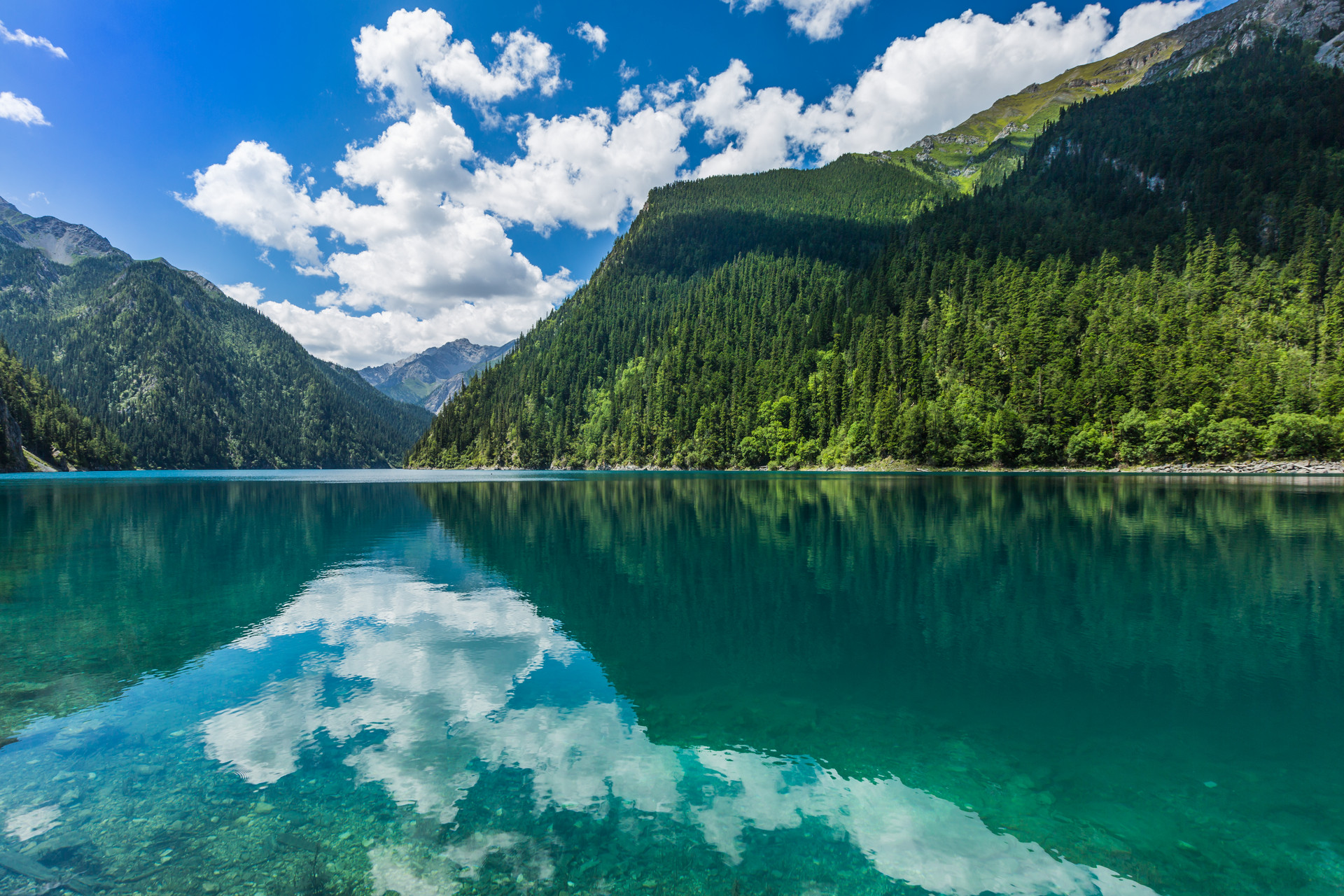
Jiuzhai Valley Travel Tips
Altitude
The elevation of the Jiuzhai Valley National Park ranges from 1,990m (6,529 feet) at the entrance to 4,764m (15,630 feet) at the peak of Ga Er Na Feng Mountain.
Although altitude sickness is rare, visitors should be aware of the elevation and expect to be out of breath quicker than you normally would be at lower levels. Some preventative measures to the affects of altitude sickness are to drink plenty of water and carry some aspirin in case it is required. Having said this you will never be too far from a water source or from other people. Busses run constantly between the scenic spots and you can hop on and off freely during the day with your bus ticket. Oxygen supplies are available for a nominal fee at the medical center at the park entrance.
Climate
Jiuzhai Valley has a subtropical to temperate monsoon climate. Valleys are warm and dry, the middle mountain slopes cold and damp. At Nuo Ri Lang Waterfall & visitor centre at an altitude of 2,400m (7,875 feet) the mean temperature is 7.3ºC, the mean January temperature is -3.7ºC and the mean July temperature is 16.8ºC. Although the official temperatures are not too high, summer temeratures often reach 30ºC.
The total annual rainfall is 761mm but in the cloud forest between 2,700m and 3,500m it is at least 1,000mm. 80% of the rain falls between May and October as the monsoon moves up in the valley giving mild, cloudy, moderately humid summers. Above 3,500m the climate is colder and drier. Snow falls vary but usually falls between October and April with December to February receiving the heaviest falls.
Best time to go
The best time to visit is September through early November, when you ‘re most likely to have blue skies and blazing autumn colors to contrast with the turquoise lakes.
Summer (June to August) is the busiest time due to the summer holiday and also the rainiest time to go.
Spring (March to May) can be cold (1°C/34 °F ~ 14°C/57°F), but still pleasant with fewer tourists around.
Winter (Late November to February of next year) is frigid (-6°C/21°F ~ 7°C/45°F), but you can see dramatics ice-coated trees and frozen waterfalls. Huanglong Scenic Area may be closed in winter. If you would like to visit Huanglong and Jiuzhaigou together, try other warmer time.

- $978.00
- 8D7N DAYS
01. Dagu Glacier, Arriving at the glacier of 4850m and staying with the wide and quite snow world, seeing No. 1 Glacier, and experiencing the powerful atmosphere of “standing on the highest mountain to view everything under their feet”02. …
Read More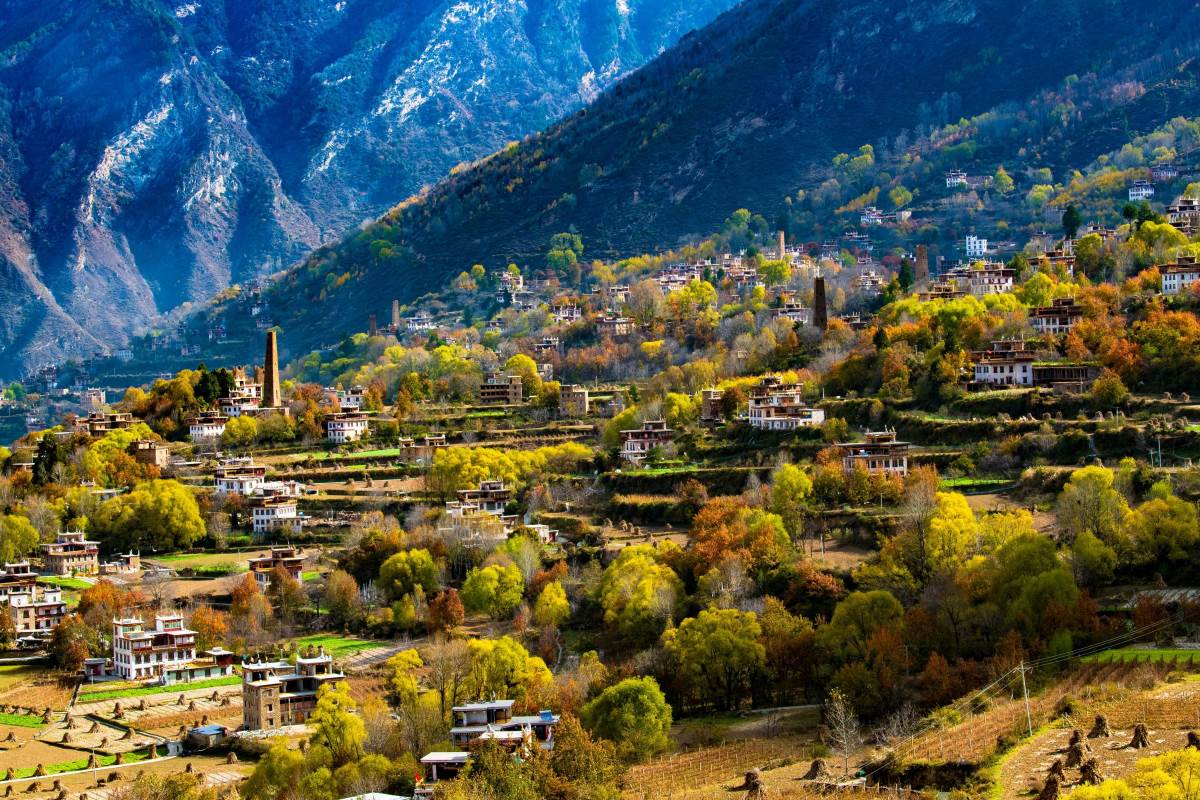
- $928.00
- 8D7N DAYS
01. Visit the world’s largest and most complete sanctuary for giant panda -Wolong Panda Reserve , where researchers are trying their best to release zoo panda to wild.02. Immerse yourself into the unique beauty of Western Sichuan in Mt Sigu…
Read More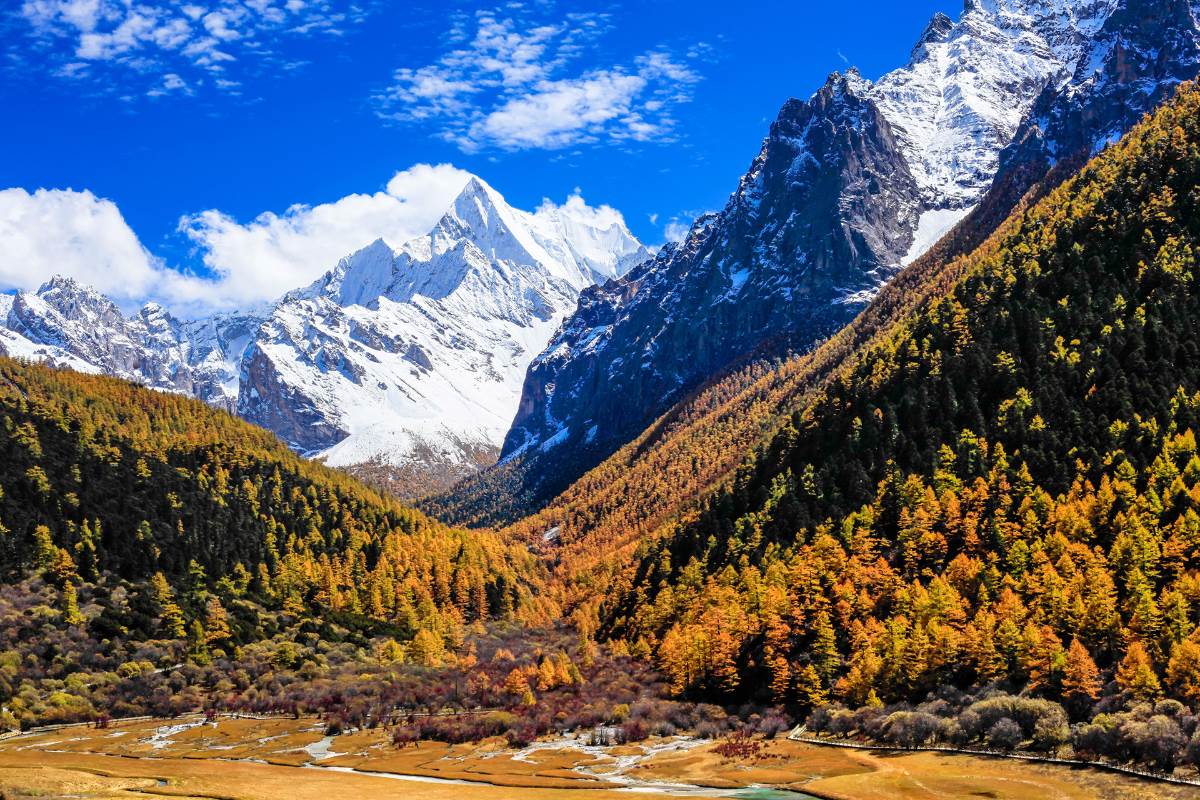
- $1028.00
- 9D8N DAYS
01. A classic photography tour deep into Danba, a county of watchtowers and China's top beautiful Tibetan villages, See different Tibetan people and also their unique Danba ancient stone towers, which was awarded as the top of the "…
Read More
- $548.00
- 6D5N DAYS
01. Visit Dujiangyan Irrigation System, explore the oldest and only surviving no-dam irrigation system in the world; and a wonder in the development of Chinese science.02. The famous place to enjoy the blossom of snow pear flowers in Jinchua…
Read More
- $USD598.00
- 6D5N DAYS
01. 2.5 days exploring Mt Siguniang by visiting Shuangqiao Valley and hiking Changping Valley and Haizi Valley, immerse yourself into the unique beauty of Western Sichuan in this Siguniang Trekking tour. Have a remarkable hiking to the Mount…
Read More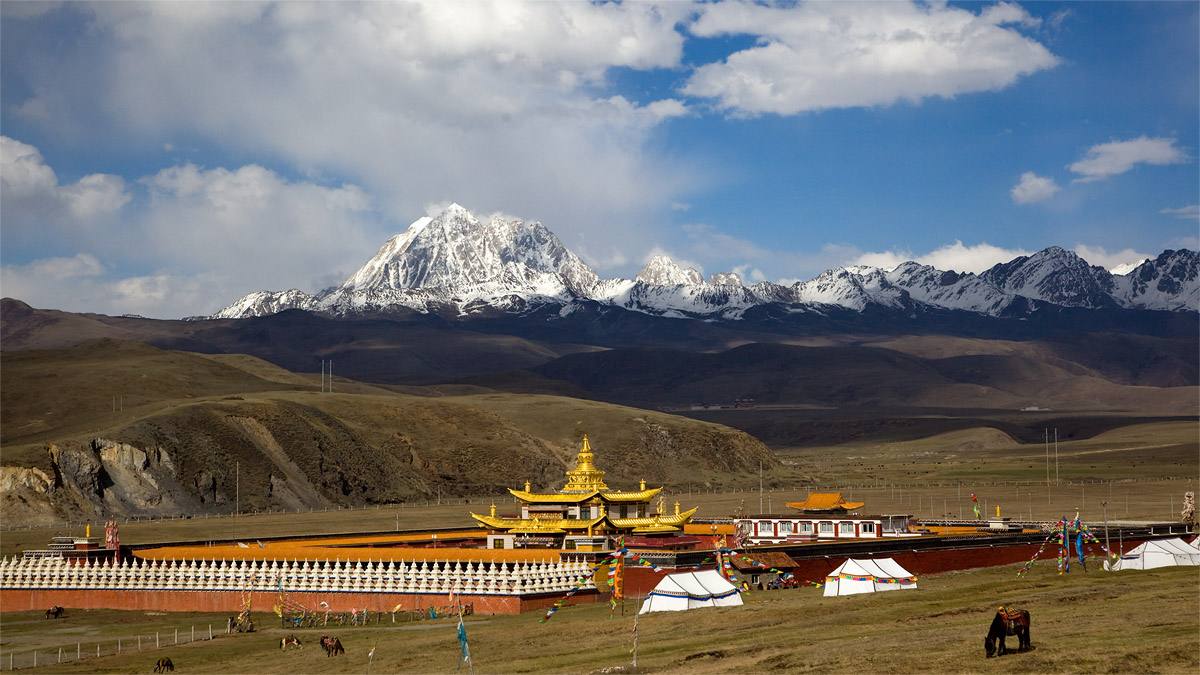
- $USD898.00
- 8D7N DAYS
01. Along the way, no matter on bus or during hiking, we will be surrounded by vast grasslands, forests, lakes and spectacular snowy mountains. Immerse in the amazing views, and feel the beauty of being close to nature!02. Walking in Danba T…
Read More
- $788.00
- 7D6N DAYS
01. A great tour of a visual feast to explore two magnificent World Heritage Site around Chengdu - Leshan Giant Buddha and Mount Emei in a leisure way.02. Enjoy the “king of shu mountains” Hailuogou Glacier , Hiking through the attractive …
Read More
- $1380.00
- 11D10N DAYS
01. A holy pilgrimage route that covers several topical Tibetan Buddhists monasteries in west Sichuan.02. splendid nature sceneries include grassland, snow-capped mountains, plateau lakes etc, ancient Tibetan villages, sacred monasterious, a…
Read More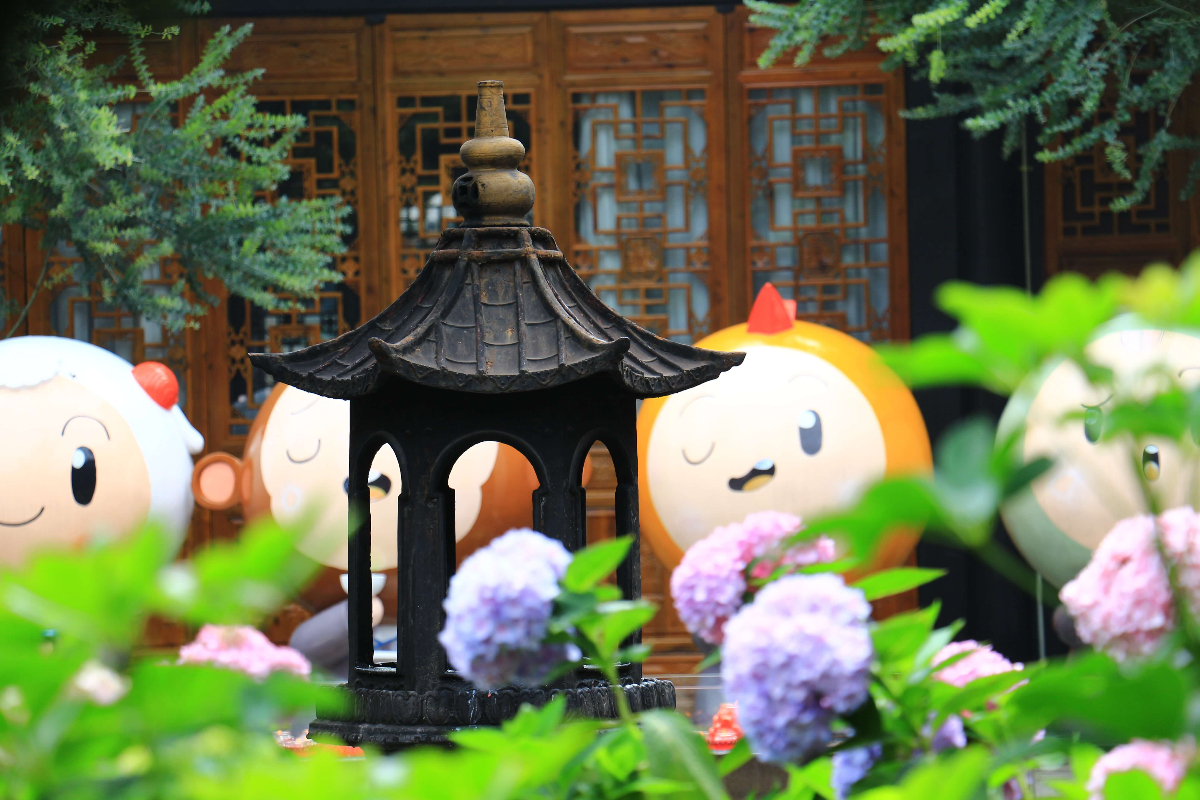
- $728.00
- 7D6N DAYS
01.Meet the lovely pandas in the Panda Breeding and Research Center, Getting a close-up look at China's most iconic residents.02. Enjoying a cup of traditional Chinese tea and absorb the special atmosphere of Chengdu.03. Play with Sichua…
Read More
- $680.00
- 8D7N DAYS
01. Have a walk in the believed-to-be “Paradise of Photographers” Xinduqiao to experience local Khampa Tibetan landscape and local people,enjoying the endless sub-alpine meadow, scattered yaks in Xinduqiao.02. Visiting the highest town in …
Read More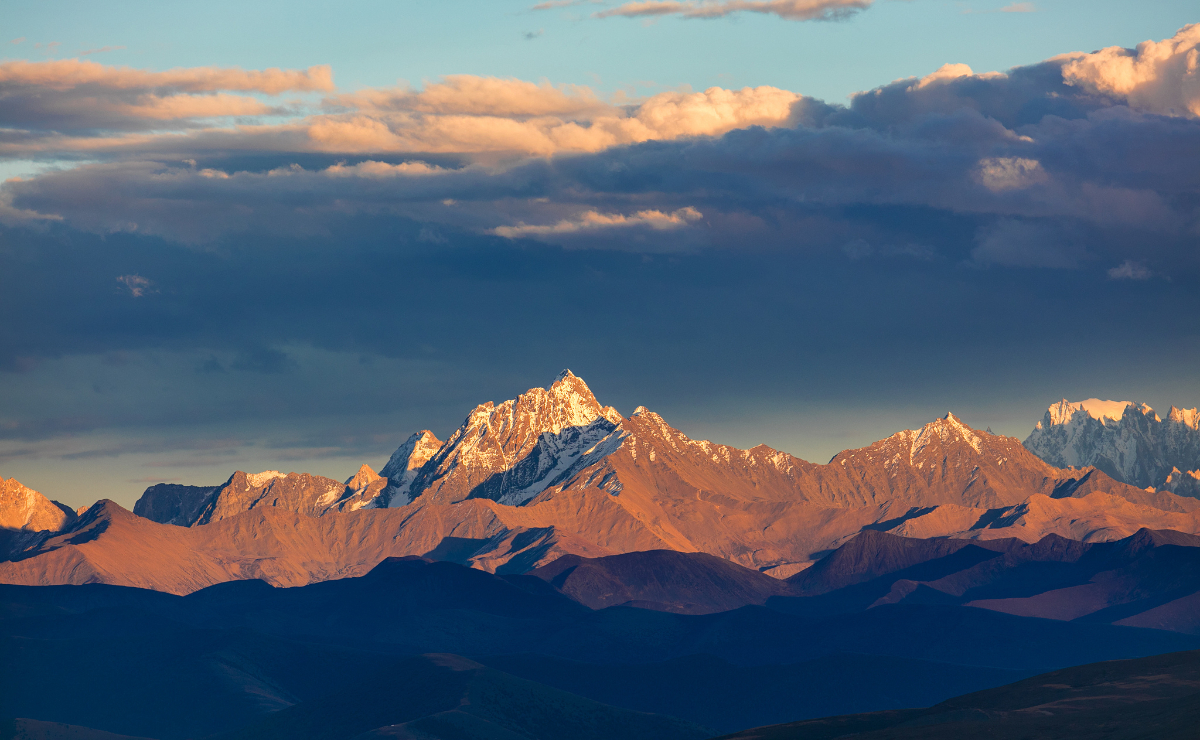
- $1380.00
- 9D8N DAYS
01. Trek beneath Minya Konka (7556m), the highest peak beyond the Himalaya, meet the distinctive Khampa and Minyak communities of the Kham region02. Be surrounded by vast grasslands, forests, lakes and spectacular snowy mountains. Immerse in…
Read More